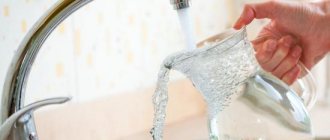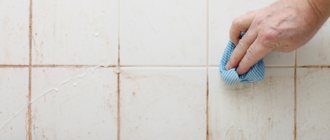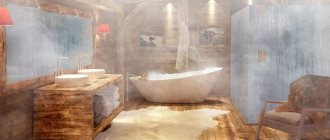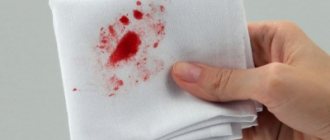This does not look aesthetically pleasing, leads to the destruction of materials, and is also quite dangerous for human health, because colonies of fungi can cause various diseases.
The causes of mold are commonplace: heat, excess moisture and lack of regular ventilation. The fungus is actively growing, occupying large areas.
You can stop this process without significant losses yourself by using complex methods of influence. We will tell you how to remove mold from plastic and wooden windows in this article.
Why is it dangerous?
Mold and mildew produce powerful plant poisons. As they multiply, they can cause various diseases. The most common of them:
respiratory diseases; allergic diseases; headache; chronic fatigue; irritation of the skin and eyes; decreased concentration; pathologies of liver and kidney function; diseases of bone tissue.
As a rule, symptoms do not appear immediately, so diagnosing pathologies is difficult. Fungus on windows tends to multiply, and when the immune system is weakened, it aggravates a person’s condition. If the problem is not corrected in time, the disease can become chronic. Treatment will require more money and time than timely elimination of the fungus.
Causes of mold
In fact, mold always surrounds a person. These are groups of microorganisms that live unnoticed next to living things. However, if you do not create a favorable environment for them, then in the vast majority of cases they do not pose a danger.
There is an opinion that it is impossible to completely get rid of mold. In this case, it is possible to create conditions in which the fungus is not able to reproduce and live. One of the main factors influencing its formation is excessive humidity in the room and insufficient ventilation. Why does mold appear on windows? Most likely, the humidity in the room exceeds 60%.
Another equally important condition for the development of fungus is temperature. As a rule, it varies between 15-38 degrees Celsius. The most favorable range for reproduction is considered to be +22…+27 °C. Based on the above, it is clear that the fungus is a constant cohabitant of humans, since these conditions are optimal for humans as well.
Remaking plastic slopes
If black mold appears on the windows and covers a large area of the panel, it cannot be removed using conventional means. In this case, a complete rework of the slope is required, since the main mass of fungus is usually hidden under it. To do this, remove the outer decorative corner with a chisel, pick up the side part with a spatula and, loosening it a little, remove it. If it is attached to polyurethane foam, use a sharp knife to cut it and remove the part. The remaining parts of the slopes are removed in the same way.
After removing the thermal insulation, inspect the seams. In this case, you can see that moisture penetrates the slope from the outside. Then you need to thoroughly seal the external interpanel joints. For residents living on the top floor, they cannot do without the help of climbers.
Why does mold appear in winter?
Most often it forms on plastic window structures. The thing is that here the conditions for its growth are almost ideal. In the summer, its localization decreases significantly as the air becomes dry and the room is ventilated. Weather conditions improve and the mold on the window disappears. With the onset of cold weather, the situation repeats itself again, and sometimes the fungus conquers increasingly larger areas.
Surely many have heard the term “dew point”. This is what causes the appearance of the fungus. Due to the difference in air temperatures outside and inside the room, condensation collects on the structure of the window and opening, the surface of the glass unit, slopes and under the window sill. It turns into water, and moisture is the optimal environment for mold to grow.
Another common reason for the formation of fungus on windows is leaking interpanel seams. The problem does not appear immediately after installation of the structure, but after a while, when the insulation in the panel takes up water. This happens due to poor quality sealing of joints and seams. Some types of insulation can absorb up to 200 liters of water. It, in turn, begins to evaporate and is deposited on the glass, thereby creating favorable conditions for the development of mold.
Ventilation and plumbing
To completely remove mold, it is important that the ventilation works well and there are no problems with the plumbing. To check the operation of the ventilation, bring a flame from a lighter or candle to its grille. If the tongue does not move, it means the ventilation is closed. In this case, they call a technician to clean the channels. If this is not the reason, then the installation of a special fan is required, which will promote air circulation in the room.
Special supply valves are installed on window units to improve ventilation. They provide a flow of fresh air, prevent windows from “sweating” and prevent the development of mold. To reduce humidity during cooking, install a hood above the stove.
Faulty plumbing is also a common cause of high humidity. Then all leaking taps and pipes are repaired. It is also worth considering the material from which the pipes are made. Condensation often settles on a metal surface, so it is better to replace such pipes with plastic.
If the structure is installed incorrectly
Often, mold on plastic windows is formed as a result of poor-quality installation of products. Despite all the preventive measures and methods of getting rid of the fungus, the problem will return again and be regular. Reasons may include:
- After dismantling the old structure, the entire window opening was not sufficiently cleaned of dirt. In addition, no fungicide treatment was carried out. The windows were replaced during the cold season; icing and further thawing or moisture ingress became an impetus for the development of fungus. The cracks were not filled with foam thoroughly enough, and the joints were poorly treated with sealant. When choosing a window design, the temperature conditions inherent in the region were not taken into account.
Even the slightest mistake when choosing and installing a window structure can result in big problems. It is for this reason that it is important to contact trusted specialists and install double-glazed windows from well-known manufacturers.
How to remove mold around a plastic window
Most often, people neglect prevention issues and think about solving a problem only when faced with it. When mold is found on the window slopes, proceed to the following steps:
- The window sill and window trim are removed. Everything is thoroughly cleaned and dried. Treatment is carried out with chlorine-containing products. All holes and cracks are filled with foam or sealing compounds. The surface is primed with a special product, for example, Ceresit ST 99. The window sill and trim are installed in place.
If the above measures do not correct the situation, you need to make ventilation holes in the upper part of the plastic structure. You can also use the following household tools:
copper sulfate; chlorine; vinegar essence; fungicides; hydrogen peroxide solution; disinfectants or antifungals.
The most popular means
To remove mold on a window, the following substances are usually used:
- Bleach is one of the simplest and most affordable remedies. In addition to mold, it eliminates bacteria and has disinfectant properties. The powder is diluted with water in a ratio of one to five. While working, you must wear rubber gloves and a respirator. Bleach kills fungus instantly, so there is no need to apply it for a long time. It may not have the best effect on the decorative finish of the window, so its use is not recommended for treating slopes, window sills and the front parts of the structure. Copper sulfate. This substance is an excellent tool for destroying all kinds of microorganisms. When working with it, it is important to protect the skin and respiratory system with protective gloves and a mask. Plastic frames, slopes and window sills are treated with vitriol. However, it should not be applied to metal parts as this may lead to corrosion.
Household fungicides are often formulations based on one of these products, but in finished form. One of these is “Whiteness”, Well Done 2 or a more caustic composition from the domestic one.
Preventive actions
If you follow the rules of prevention, this will destroy favorable conditions for mold and will save you a lot of trouble. The main thing you need to pay attention to is the relative humidity. A small percentage is created when exhaling, from a heated body. Some part comes from the evaporation of water in the house. A huge percentage is obtained by boiling the liquid and drying the damp fabric. The last two reasons need to be controlled.
The second thing you need to pay attention to is mold breeding grounds. She loves cotton fabric. Ideal conditions are created in the ground where plants grow, since many of them love warmth and moisture. Even dirt can cause it. If you get rid of these factors, you can reduce the likelihood of fungus. Or use the technical method:
Of course, mold can be a source of unnecessary worries and pose a health hazard. However, knowing weaknesses, you can successfully combat them, and most importantly, prevent conditions for their occurrence.
For those who are planning to reinstall a window, this video may be useful:
Gentle chemistry
You can use less aggressive substances for cleaning:
You can remove fungus from glass and plastic frames using a vinegar solution. To do this, add 200 ml of essence and boric acid to one liter of water. A natural and effective remedy in the fight against fungus is a solution prepared from one teaspoon of tea tree oil and a glass of water. Mold can be removed with a 3% hydrogen peroxide solution. Conventional detergents, for example, Cillit Bang, help remove mold from the surface. Disinfectants such as Biocin and Neomid 600 have proven themselves well in the fight against mold.
In some pharmacies you can find medicinal antifungal compositions with a wide spectrum of action - “Clotrimazole” and “Candide”.
How to remove mold from a plastic window
This can be done with affordable home remedies. Their production requires a minimum of time and financial costs, and in terms of efficiency they are superior to expensive targeted means. The following formulations will help get rid of mold on windows:
- A glass of vinegar essence is mixed with the same amount of boric acid and a liter of warm water, and the entire window structure is treated. Add 100 g of bleach and copper sulfate to a liter of water; the resulting product effectively fights fungus. Dissolve 100 g of copper sulfate and sodium fluoride in a liter of water and treat problem areas.
It is better to treat surfaces using synthetic fabric. Sodium vitriol and sodium fluoride can be purchased at hardware or gardening departments. It is imperative to protect the skin of your hands and face with gloves and a mask. After cleaning surfaces affected by mold, the room is well ventilated.
Surface cleaning
The material of the slopes where moldy spots have formed is of great importance. If plastic is used, the plank is disassembled and the wall underneath is completely disinfected. Plasterboard panels are replaced with others. The fungus has already managed to penetrate the pores of such material, so it will not be possible to completely remove the colony.
Use a stiff brush to get rid of mold and completely clean it from surfaces, frames and walls. Then you need to treat the wall and the double-glazed window with a chlorine-containing substance, first protecting your hands with gloves.
Antiseptic treatment
Products for antiseptic treatment are purchased ready-made at a hardware or hardware store. Typically, they use copper sulfate or chlorine as the active ingredient. There are several options for making your own disinfectant composition.
First option:
- 200 ml acetic acid concentration 70%;
- 200 ml boric acid;
- 1 liter of water.
Second option:
- 100 ml copper sulfate;
- 100 ml sodium fluoride;
- 1 liter of water.
Third option:
- 1 part bleach;
- 1 part copper sulfate;
- 5 parts water.
Important! Before processing, gloves are put on your hands. Then the prepared wall is treated with an antiseptic using a brush. After finishing work, be sure to ventilate the room.
Consolidate the result
To prevent reoccurrence of mold, waterproof the surface. The slope is covered with construction mastic, creating a moisture-proof barrier on the wall. It will last for several years.
Sorbent and ionizer
Household appliances can also help in the fight against fungus. An ionizer is a device that purifies the air from germs, bacteria, pathogenic organisms, etc. Small models are very convenient to use. The device is placed on the windowsill and turned on at high power, and after some time the minimum mode is set. The device is left on for about half an hour.
A sorbent is an aroma absorber. It is produced on an industrial scale to eliminate unpleasant odors in rooms. It will not be able to radically change the situation in the fight against mold, but its use will have a small effect.
Prevention measures
The most important thing is to maintain a normal (for residential premises) microclimate:
- ensure the influx of fresh air and the outflow of “stagnant” air (that is, supply and exhaust ventilation must work normally);
- make sure that the window does not fog up and that condensation does not appear anywhere;
- control and maintain humidity not higher than normal (no higher than 60%, this should especially be monitored in the kitchen).
Let's take a closer look at the methods of prevention:
- Hang a hygrometer (a device that measures humidity) in every room and kitchen. In principle, if mold has never appeared, or appears, but slowly and rarely, this is not necessary: if the humidity is exceeded, then only slightly.
- Periodically (at least once a month) inspect the windows to see if mold has appeared. If yes, do not run it, but delete it in a timely manner.
If you buy windows, buy a model with micro-ventilation, or so that you can open the window like a window in several modes (with different opening angles, including a minimum for a weak draft).
If the apartment is being renovated, the slopes and walls around the window opening must be treated with any waterproofing agent, and covered only with moisture-proof plasterboard (if it is used and not plaster).
How to properly use a sulfur bomb Climate: instructions
Why do you need a smoke bomb for a cellar, and how to use it correctly?
Related Posts
Chemical substances
In addition to home remedies, specially designed chemical compounds help in the fight against mold on the window:
- Atlas Mykos. This is a concentrate designed to remove mold, algae, fungi, moss and lichen. It is used for processing indoors and outdoors. The product is diluted with water according to the instructions, it all depends on the surface being treated. Astonish. One of the best remedies against black mold. Stains are easily cleaned without much effort. If you need to remove fungus from window structures, shower cabins, tiles, this product will be the best choice among analogues. SZAVO. A popular remedy for mold in residential, technical and basement areas. Completely destroys mold, algae and yeast. It is easy to apply, does not require rinsing, does not leave stains or streaks on the surface. Antialga B25. This is a water-based composition containing fungicide and algicine. Effectively eliminates various types of mold and fungi. The product is odorless, non-toxic, and is often included in wood paints as additional protection. Well Done 2 is a new generation antifungal agent with an antibacterial effect. The result is noticeable almost immediately. As a rule, it is used to treat affected areas of painted walls, wood, windows, bathrooms and even ventilation systems.
Conditions for the growth of mold and mildew
Since mold and household fungi have very low nutritional requirements and enormous opportunities for adaptation, they can develop on almost any surface: plaster, plastic, wood, paper, textiles, concrete. For their reproduction, a humidity level above 60%, a temperature of 20-35 degrees and a pH below 7 (acidic environment) are required. In short, the ideal conditions for fungal growth are high humidity and warmth.











